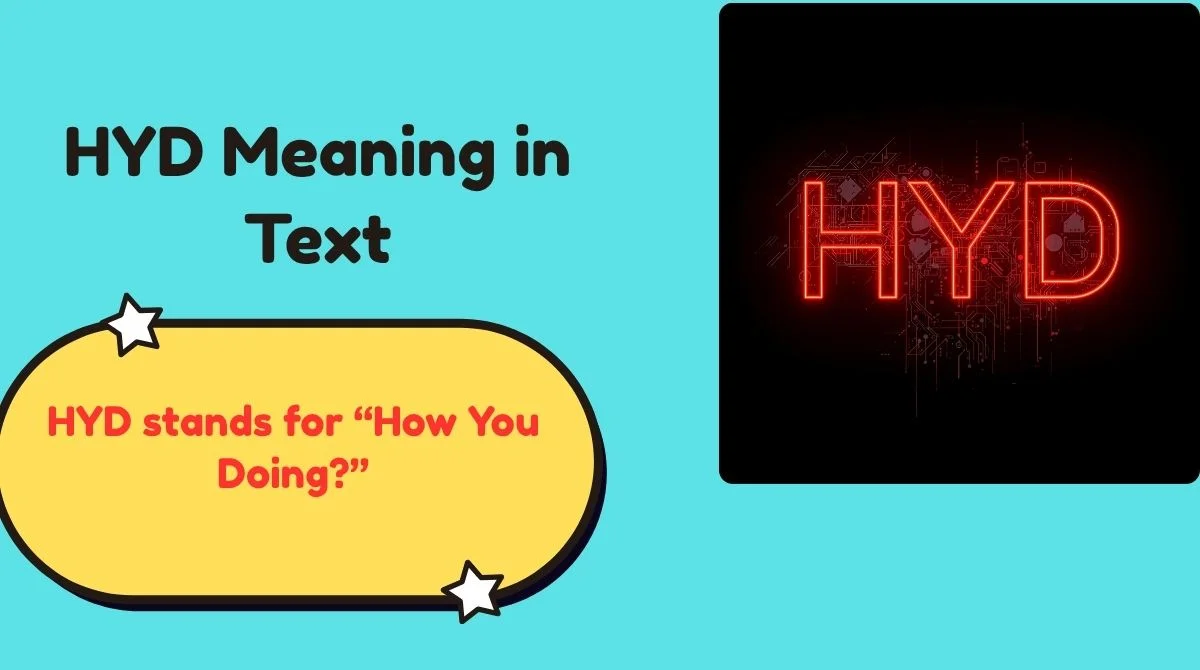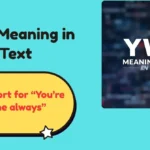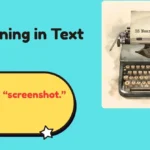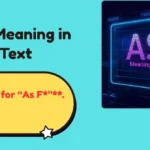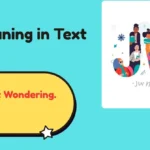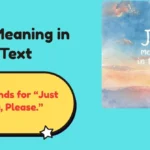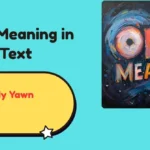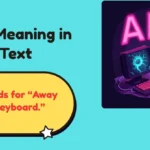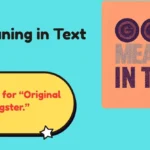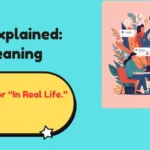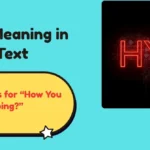Ever opened a message that just said “HYD” and wondered what on earth it meant? Don’t worry — you’re not alone. In the world of modern texting, abbreviations like HYD, BRB, LOL, and TTYL fly around faster than we can type full sentences.
This guide breaks down what HYD means in text, when people use it, how to respond naturally, and how tone changes everything. You’ll also find real-life examples, tables, and reply templates for every situation — from casual chats to flirty conversations.
What Does HYD Mean in Text?
HYD stands for “How You Doing?” — a shortened, casual version of the question “How are you doing?”. It’s a quick, informal greeting often used in text messages, DMs, and online chats.
You’ll typically see it pop up like this:
“HYD?”
“Hey, HYD?”
“Yo, HYD lately?”
It’s short, friendly, and easy — the texting version of a wave 👋.
The Real Meaning Behind HYD
At its core, HYD is about connection. It’s someone checking in on you — maybe out of politeness, curiosity, or genuine care.
But here’s where things get interesting: the meaning of HYD depends heavily on context. The same three letters can mean different things depending on:
- Who sent it (friend, crush, coworker, or stranger)
- When they sent it (after a long time or mid-conversation)
- How they sent it (with emojis, punctuation, or tone)
Let’s decode it further.
Origin of HYD
HYD emerged during the early 2000s when texting had character limits (remember T9 keypads?). People started shortening phrases to save time. That’s how “How you doing?” became HYD — compact, fast, and still friendly.
Today, it’s common across Snapchat, WhatsApp, Instagram DMs, dating apps, and even workplace chat tools.
Why Understanding HYD Matters
You might think it’s just a simple question. But understanding what HYD really means helps you respond in the right tone — and sometimes, that can change the direction of your conversation completely.
For example:
- If a friend texts “HYD?”, they might just want to chat.
- If a crush sends “HYD 😉”, they’re probably flirting.
- If a coworker messages “HYD”, it’s just small talk.
Knowing the difference keeps your replies confident and natural — not awkward or misunderstood.
Where You’ll Commonly See HYD
Let’s look at the most frequent places you’ll find HYD and what it usually implies in each one.
| Platform | Common Use | Example |
|---|---|---|
| Text Messages (SMS) | Everyday check-ins with friends/family | “HYD? Haven’t heard from you in ages!” |
| Social Media DMs | Friendly or flirty starts | “HYD 😉” or “HYD, you’ve been quiet lately.” |
| Dating Apps | Opening line to start a chat | “HYD tonight?” |
| Workplace Chats (Slack, Teams) | Polite tone, rare | “HYD after the meeting?” |
| Gaming/Community Servers | Casual online interaction | “HYD everyone? Ready to play?” |
So next time you see it, pay attention to where it came from — that’s your first clue.
Decoding the Tone: What the Sender Really Means
The tone behind “HYD” can shift from caring to curious, from flirty to formal — depending on how it’s sent. Here’s a breakdown:
Friendly HYD
Used between friends, cousins, or classmates.
It’s casual, warm, and simple.
Example: “HYD? Haven’t seen you in class lately.”
Flirty HYD
Used when there’s romantic interest or light teasing.
It often comes with emojis like 😉, 😏, or ❤️.
Example: “HYD cutie? Missed me yet?”
Professional HYD (Rare)
Used in light workplace chats — polite but neutral.
Example: “HYD after last week’s launch? Hope the schedule’s easier now.”
Passive HYD
Used when someone is distant or unsure about the relationship.
No emojis, no warmth — just “HYD.”
Example: “HYD.” (read: they’re not trying too hard)
How To Reply To HYD (Based on the Situation)
Before replying, think about three things:
- Your relationship with the sender.
- The tone of their message (friendly, flirty, distant).
- What you want the conversation to become.
Here’s how you can adapt your reply accordingly:
| Situation | Tone | Sample Reply |
|---|---|---|
| Friend | Chill | “All good! You?” |
| Crush | Flirty | “Better now that you texted 😄” |
| Colleague | Polite | “Doing great, thanks. How’s your day going?” |
| Distant acquaintance | Reserved | “I’m doing fine, thanks for asking.” |
Tip: Mirror their energy. If they’re playful, be playful. If they’re formal, stay polite.
12 Best Replies To “HYD” (With Context & Tone Explained)
Below are 12 practical replies you can actually use — plus notes on tone and when to use them.
- “I’m doing well, thanks! How about you?”
- Balanced, polite, and safe. Perfect for coworkers or acquaintances.
- “Pretty good! What’s up with you?”
- Friendly and open-ended, keeps the chat going.
- “Better now that you’re texting me 😊”
- Flirty and confident — great for romantic interest.
- “Can’t complain! How’s your day going?”
- Casual, realistic, and conversation-friendly.
- “I’m fine, thank you. Hope everything’s good on your end.”
- Polite and slightly formal, suitable for professional use.
- “Doing great! Just got back from a hike. You?”
- Adds personality — share a detail to make your reply engaging.
- “Not too bad! Trying to survive this inexplicable week 😅”
- Relatable and real; works for casual chats.
- “Awesome, actually. Just finished a big project!”
- Enthusiastic tone; perfect for showing positivity.
- “Tired, but making it through. You?”
- Honest and human — invites empathy.
- “Good, thanks! Enjoying some downtime today.”
- Relaxed, simple, weekend-friendly.
- “Doing okay, just taking it one day at a time.”
- Slightly reflective, good for personal conversations.
- “All’s well here! How are you holding up?”
- Sounds thoughtful and genuine; good for reconnecting.
Casual vs Polite vs Professional Replies
Here’s a quick table to help you decide which tone to use depending on the situation.
| Type | Example | When to Use |
|---|---|---|
| Casual | “Pretty good! What’s up?” | With close friends or classmates |
| Polite | “Doing well, thanks! How about you?” | When texting acquaintances |
| Professional | “I’m doing fine, thank you.” | With clients, coworkers, or formal contacts |
Pro Tip: Avoid overusing emojis in formal replies, but feel free to use them casually — they add warmth and authenticity.
Better Alternatives to HYD
Sometimes you want to check in without sounding repetitive. Here are a few alternatives you can use depending on the tone.
Polite Alternatives
- “Hope you’re doing well!”
- “How have you been lately?”
- “Trust you’re having a good week.”
Casual Alternatives
- “What’s up?”
- “How’s it going?”
- “How’s life treating you?”
Friendly or Personal Alternatives
- “Missed talking to you!”
- “Long time no chat — how’s everything?”
- “How’ve you been holding up?”
Professional Alternatives
- “Just wanted to check in and see how things are going.”
- “Hope all’s good on your side.”
Each one works better depending on your relationship and tone.
Choosing The Best Reply: 3 Key Factors
The perfect response to HYD depends on a mix of timing, tone, and connection.
- Who’s texting you
- Friend → keep it casual.
- Crush → keep it charming.
- Colleague → stay polite.
- Timing matters
- If they text late at night: likely flirty.
- Morning texts: casual or thoughtful.
- After a long silence: checking in.
-
Match their energy
If their message includes emojis or multiple exclamation points, they’re warm or excited — so you can match that energy.
“Tone matching” is key to building rapport in digital communication.
Common Mistakes People Make With HYD
Even though it’s simple, people often trip up when replying to HYD.
1. Overthinking the Message
You don’t need to craft a perfect reply — keep it short and authentic.
2. Being Too Formal
Using stiff phrases like “I am doing fine, thank you for your concern” sounds robotic.
3. Ignoring the Context
If someone flirty texts “HYD 😉” and you reply “Fine.” — you just killed the vibe.
4. Delayed Replies
HYD is a real-time question. Waiting too long makes you seem uninterested.
5. Copy-Paste Responses
Personalize your answer. Add details like your day, your mood, or something funny.
Quick HYD Cheat Sheet
Here’s your fast-reference table 👇
| Situation | Example Reply | Tone |
|---|---|---|
| Friend | “All good! You?” | Friendly |
| Crush | “Better now that you texted 😄” | Flirty |
| Co-worker | “Doing well, thanks for asking.” | Professional |
| Family | “Good! Just catching up on things.” | Warm |
| Stranger | “I’m fine, thank you.” | Neutral |
Keep this handy for next time your phone lights up with a simple “HYD.”
Case Study: The Power of Tone in Texts
Let’s look at a real-world example.
Case:
Anna and Jake both receive a message saying “HYD?”
- Anna’s from her college friend, sent at noon. She replies, “All good! You?” → The chat continues casually about their weekend.
- Jake’s from a dating app match, sent at 11 PM with a wink emoji. He replies, “Better now that you texted 😉” → The chat turns flirty and fun.
👉 Lesson: The same three letters can lead to totally different conversations depending on timing, tone, and intent.
Final Thoughts
HYD may be one of the simplest texting phrases, but it packs a surprising amount of meaning. Whether it’s friendly small talk, a flirty opener, or just a courteous check-in, your response shapes the next step in the chat.
So next time your phone lights up with “HYD?”, pause for a second.
Think about who it is, how they said it, and what you want to say back.
💡 Then reply with confidence — because now, you know exactly how to decode it.
FAQs About HYD Meaning in Text
What does HYD stand for in texting?
HYD stands for “How You Doing?”, a short, casual way to ask someone how they’re doing or feeling.
Is HYD flirty or friendly?
It can be either, depending on the tone. Additions like emojis or timing (late-night texts) often make it flirty.
How should I respond if I don’t want to continue the chat?
Keep it brief but polite: “I’m good, thanks.” No follow-up question signals you’re not looking to engage.
What’s the difference between HYD and WYD?
HYD asks about your mood or wellbeing, while WYD means “What are you doing?” — focused on activity.
Can I use HYD in professional texts?
It’s rare, but you can — just make sure the tone is respectful and clear. Example: “HYD after the event? Hope all went smoothly.”
